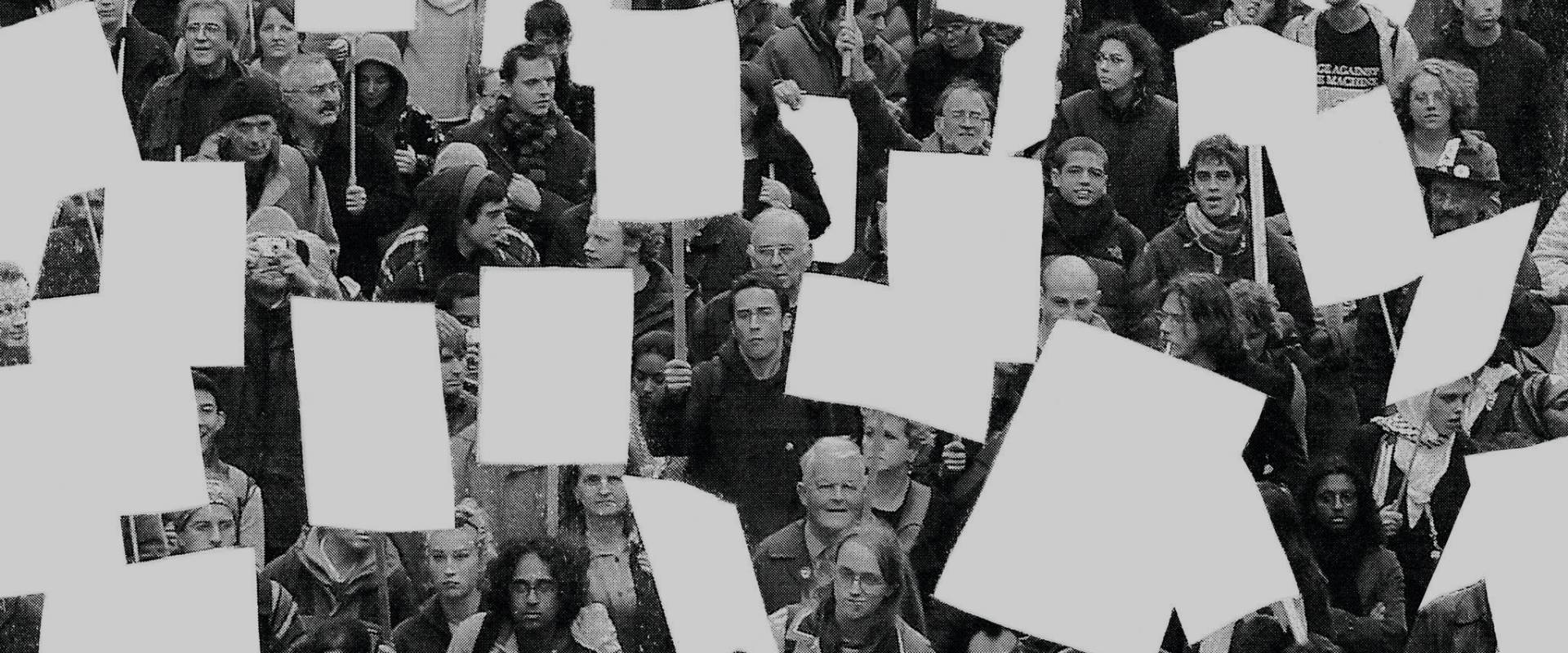During the postwar boom, from 1945 through the early 70s, the ruling class in the United States was relatively united. “Politics stops at the water’s edge,” as the saying went. Foreign policy stayed the same no matter who was in office, while the US used its position to dominate the world militarily and economically. It protected its private capitalist allies and with them enforced imperialist domination of the Global South, while pursuing the policy of containing “communism.” It backed military dictatorships to stop the spread of state capitalism and to keep wages low and open the “free world” to US investment. It fought the Korean War and the Vietnam War under both parties. This unity came in sharp contrast to the division in the ruling class during the 1930s over isolationism and internationalism.
Domestically, Republicans accepted the reforms of the New Deal and Democrats did not seek to expand them much. When Black people forced civil rights onto the national agenda, the division over it was within the parties rather than between them.
The end of ruling-class unity
Ruling-class unity was ultimately shattered by neoliberalism. The pre-war semi-autarky gave way to increased globalization, which put US firms under more competitive pressure. The long boom led to a steady increase in the organic composition of capital and declining profit rates. Increased competition reduced the dominant economic position of the US.
At the same time, the labor movement in the US had become bureaucratized and encompassed a smaller section of the labor force. It was in a weaker position than it had been in the 30s and 40s. Capitalists felt they had to attack unions and raise the rate of exploitation. They also felt they were in a position to do so since labor was weaker. Labor leaders who had been minor players in the Democratic Party continued to pursue class collaborationism which further weakened unions. Capitalists saw that their attacks would not provoke an upsurge like the 1930s. Private sector unionization fell from 35% in the early 1950s to 20% by 1980.
During the postwar boom, from 1945 through the early 70s, the US ruling class was relatively united. “Politics stops at the water’s edge,” as the saying went.
The social and political gains from struggles in the 1960s and early 70s were a further drain on profits. The ruling class wanted to roll them back. This was expressed in the Powell Memorandum of 1971, written by a future Supreme Court justice appointed by Richard Nixon:
Business must learn the lesson, long ago learned by Labor and other self-interest groups. This is the lesson that political power is necessary; that such power must be assiduously cultivated; and that when necessary, it must be used aggressively and with determination — without embarrassment and without the reluctance which has been so characteristic of American business.
The Trilateral Commission, an international organization credited for influencing neoliberal policies in the US, Japan, and Europe, complained of an “excess of democracy.”
All this created the grounds for a major shift in policy in the mid-to-late 70s. The capitalist class and the government did all they could to raise the rate of exploitation to increase profits. They slowly and then more rapidly instituted neoliberalism — cutting tax rates on the rich and corporations, privatizing government functions, de-regulating previously regulated parts of the economy, cutting social programs, attacking unions, and driving down working-class living standards. The official rationale sounded libertarian — let the market control everything. In reality government spending remained a large portion of the economy. The government paid private corporations to do what the government had previously done. Government spending shifted from the carrot to the stick. Prison construction accelerated as did incarceration rates.
Neoliberalism’s impact on ruling-class politics
When the US dominated the world and profits were up, the “band of hostile brothers,” as Marx and Engels described the ruling class, were more brotherly and less hostile. Capitalists were willing to accept regulation for the good of US capitalism as a whole. They were willing to accept higher taxes since the system was working very well for them. They all felt they benefited from US military hegemony which included its alliances such as NATO.
Increased competition reduced the class consciousness of the ruling class. Each corporation and sector looked out more for itself and less for the class as a whole. When the ship seemed to be sinking, it was every rat for itself. This was exacerbated by the relations of capital and the state. Increased globalization weakened the identification of some economic actors with the US state. At the same time, the state still had the obligation to defend US capitalism as a whole. It increasingly came into conflict with the less class-conscious sections of the ruling class.
Ruling-class unity was ultimately shattered by neoliberalism.
The division between the more and less class-conscious sections of the ruling class overlapped with the division between global and national capital. The relatively smaller capitalists were under more competitive pressure and wanted more extreme policies. They saw less benefit from the US’s global alliances. The larger multi-nationals and finance capital still saw the benefit from those alliances and from multilateral action. These conflicts came to the fore after the Great Recession of 2007–08 and more so with the COVID pandemic.
All sections of the ruling class and both parties avidly supported neoliberal policies and continued US international hegemony with its allies until the crisis of 2008 called that into question for the “lumpen” bourgeoisie — “the ‘vultures and raiders’ who swing from speculation to swindling,” depending on shady or illegal shortcuts as the principal strategy for profit-making.
There was never a one-to-one correlation between lumpen capitalists and isolationism or Trump’s “America First” policies. There were some billionaires who supported MAGA. Some capitalists supported some more nationalist policies and some more internationalist ones. Positions would shift from time to time. However, the overall correlation remained.
Dividing the population
The capitalists under the most economic pressure also felt the need to divide the working class the most. Neoliberalism had meant a steady erosion of the rights of oppressed people. After the upsurge of the 1960s, the ruling class undermined the gains of the 60s and early 70s. Affirmative action, abortion rights, welfare, and other reforms were rolled back under both Democrats and Republicans. The ruling class was willing to intensify oppression while still claiming to be formally against it in order to gain the political support of the oppressed.
Capitalists and the government did all they could to raise the rate of exploitation to increase profits. They slowly and then more rapidly instituted neoliberalism — cutting tax rates on the rich and corporations, privatizing government functions, de-regulating previously regulated parts of the economy, cutting social programs, attacking unions, and driving down working-class living standards.
This consensus over the slow erosion of rights was also ended as a result of the economic crisis of 2007–08. In alliance with more openly racist and sexist petit-bourgeois forces, the right wing of the ruling class pushed for further outright attacks on the oppressed. Under the leadership of Trump and MAGA, it openly attacked immigrants, LGBTQ+ people, voting rights, Black and ethnic studies, and more. It was no longer enough to gradually ramp up oppression. It had to be rapidly accelerated. The MAGA wing of the ruling class was willing to challenge the previously sacred constitutional order and countenance physical attacks on political opponents to win.
Political parties
The Democrats represented the most class-conscious wing of the ruling class. They wanted to maintain the policy of erosion of rights rather than the acceleration that the right wing wanted. They were willing to raise corporate and ruling-class taxes a bit to defend US capitalism as a whole and better compete with China. This is the meaning of Bidenomics. The Democratic Party became the major party of the biggest capitalists.
Trump is a symbol of these changes rather than their cause. Pressures in the isolationist, nationalist, and accelerationist direction will persist long after Trump chokes on his last cheeseburger.
In alliance with petit-bourgeois forces, the lumpen bourgeoisie took over the Republican Party to pursue isolationist and oppression-accelerationist policies. Trump is a symbol of these changes rather than their cause. Pressures in the isolationist, nationalist, and accelerationist direction will persist long after Trump chokes on his last cheeseburger. Much of the big-business wing of the Republicans opposed Trump in 2024 over isolationism, tariffs, and fear Trump will undermine the constitutional order which has served them well. Many went over to Harris, which has exerted a rightward pull on the Democrats.
Our orientation on the ruling class
As we in Firebrand have explained in many articles, all sections of the ruling class are trying to maximize exploitation and ramp up oppression. We can give no political support to either wing. We oppose both political parties and both strategies. We promote the Marxist position in opposition to both.
We organize with others on the left and beyond to oppose the cutting edges of the capitalist offensive. We fight back against any attacks whether from Democrats or Republicans. We unite with anti-racists against immigration restrictions and immigrant bashing; with feminists for reproductive justice; with climate activists for environmental sanity; with opponents of war against US imperialism; with workers against union busting and exploitation; and with everyone we can against fascists.
We can give no political support to either wing. We oppose both political parties and both strategies. We promote the Marxist position in opposition to both.
We are in solidarity with the humanitarian goals of liberals while explaining that capitalism cannot achieve them. Instead, we argue for revolutionary methods of struggle. We reject class-collaborationism. We oppose inviting Democratic Party organizations into coalitions. This undermines the struggle and promotes ruling-class ideology. We support united fronts, not popular fronts. We prioritize struggles that push participants into the most radical opposition to capitalism, such as the Palestinian liberation movement.
We oppose alliances with far-right organizations, such as red-brown coalitions. In spite of supposedly anti-war rhetoric, the right wing is not actually anti-imperialist. Embracing their organizations only builds our enemies. We disagree with those on the left who see right-wingers as allies because they are radically opposed to the status quo. Their radical opposition is aimed at increasing oppression and exploitation.
Understanding divisions within the ruling class is important. It will help us have a more effective strategy. But to paraphrase Marx, our goal is not just to understand but to overthrow.
Illustration by Derek Brahney



